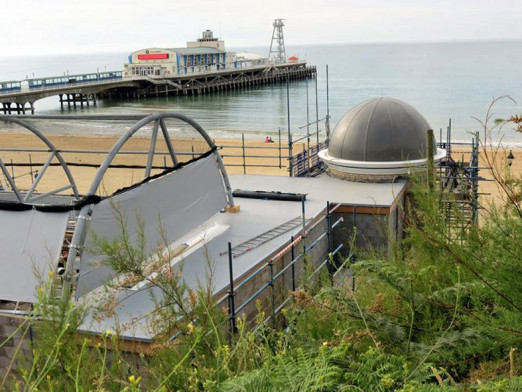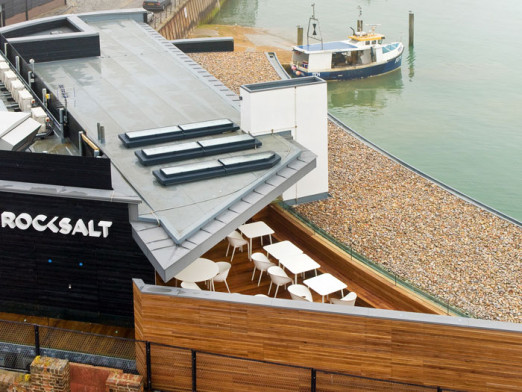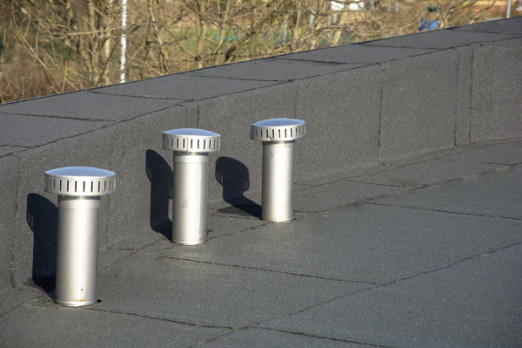We’re well into our checklist of questions to ask when you’re choosing and designing the right flat roof system. Whilst the preliminary questions on client requirements, aesthetics and structure set the broad parameters, the questions we are now going to cover are the real meat of the design factors; those related to water and heat.
Making early decisions regarding how to direct water off the roof and how to insulate it compliantly are really the key to whether your flat roof is a success or is potentially frustrated by late compromises as well as additional build and maintenance costs. These two questions are truly interconnected and really demonstrate why it is essential to get specialist help to design any but the simplest flat roofs.
Think about what your priorities are, and make sure you discuss them early in the design process to ensure the contractor can actually install it, it complies with all the relevant standards and codes of practice and your client doesn’t end up with ponding water or unsightly details.
Q6: Flat Roof Drainage and Falls. How does water leave the roof?
What are requirements for where the water comes off the roof? Does the roof need to drain internally, or can it drain externally (i.e. via downpipes outside the structure)? Are there restrictions on where water outlets could be sited?
You may want to make decisions about where water drains and down pipes are located for aesthetic or practical reasons, or both. However, this decision can only be finalised once calculations have been undertaken regarding local rain fall figures, building usage, roof size and layout, which will determine the size and number options of outlets required. There may also be considerations regarding gravity or syphonic solutions which may provide more possible alternatives in certain circumstances.
How will you create falls to deliver the water to outlets? What falls do you need? Do you have requirements for how falls are created?
Your choice on how falls are made may be influenced by the structure of the building answered in question two – so for example on a concrete structure you might wish to use screed to falls, or on a lightweight structure such as timber or steel you might use tapered (cut to fall) insulation or firring pieces, or a combined solution where main falls are created in the structure and additional cross falls are created using crickets.
The structure chosen could therefore also determine whether insulation will provide all or part of the falls for the roof. Remember, if you have a preference for how falls are created, state it here. If not, no problem.
What if you don’t want falls? Make a note here and refer to the discussion further down.
Q7: Insulation and U Values. How does the flat roof keep in the heat?
What is your target U-value for the roof? This may determine the thickness of insulation required, and influence the type of insulation chosen or even the build methodology (warm or inverted?).
A flat roof is one of the easiest places to put insulation, so good quality insulation in the roof is usually a priority to free you up to do more with the façade of the building. There are many different types of waterproofing system available, and the insulation type will be influenced by the structure, the form of the roof and the appropriate waterproofing system.
8: Upstand Heights. What height do you have available for the flat roof system?
What height do you have available for depth of roof system? This will be determined by structural grid, finished floor levels and threshold requirements and the location and size of upstands, abutments and restrictions be they planning restrictions, windows in abutments or door thresholds. Write down what you know and discuss it with your roofing specialist.
British Standard BS 6229:2003 provides recommendations for upstand heights, and these will also be required to achieve guarantees from manufacturers. Compliance with not only British Standards but also any additional 3rd party insurance schemes also need to be considered at the outset e.g. NHBC or Factory Mutual, so do check their requirements as well.
Does your scheme have thresholds? Most architects say, ‘I want to walk straight out onto my podium’ – but you need to bear in mind that might not be possible without careful, early consideration, so write it down now.
Flat Roof Drainage: Does your project comply with all the upstand height requirements?
Does your project comply with all the upstand height requirements?
Discussion
When your roofing specialist has your preferences and priorities for these three questions, they will be able to help you begin the iterative process of seeing how they impact upon each other. This design process will also need to consider a few extra factors:
Warm roof, cold roof or inverted roofs. Do you have a preference?
- In a warm roof the insulation is above the structure with the waterproofing on top. This is the simplest and most common build up. Don’t forget to ensure the VCL (Vapour Control Layer) specified coordinates with the attachment methodology i.e. PE or bitumen / mechicanally fixed/bonded/ballasted?
- In a cold roof the insulation is usually underneath the structure with a correctly ventilated void above it, the waterproofing is then directly applied to the structural deck, separated from the insulation. Most tapered insulation scenarios are warm roof applications. Cold roofs are rarely used these days except in exceptional circumstances, due to the complexity of ensuring adequate ventilation.
- An inverted roof consists of the waterproofing laid on the deck, topped by insulation which is weighed down by ballast. Amenity spaces are frequently low or zero pitch and inverted build up. However, in comparison to a warm roof, inverted roof insulation thicknesses generally need to be greater to achieve the same thermal performance and may therefore impact on upstand heights.
Falls and Tapers
If falls are provided in part by a tapered (or cut-to-falls) insulation scheme it is normal for a minimum target u-value to be required, not simply an average, particularly across large housing developments. This is to ensure, for example, that one unit does not have too little insulation when another has more than enough. Long runs of falls with tapered insulation schemes can result in a thick build up with knock on effects for your upstand heights and door thresholds; so they should be avoided.
In some circumstances, a completely flat roof is the only solution, but best practice dictates that you should get rid of water off a roof as soon as possible. It is always good design practice to get water off a roof, but in some situations you may not have the opportunity to do it. A completely flat roof may be a compromise or a specific decision, for example a podium deck or blue roof, but water outlets are still required. Only waterproofing solutions with either tanking or 3rd party accreditation certification should be considered for this type of scenario.
Summary
The impact of the above questions relating to Falls, Drainage, U-values, Thickness and performance are all interconnected and ultimately be driven by set parameters and waterproofing choices. Most situations can be accommodated however expert advice should be sought as early as possible to avoid costly design interface issues. It should also be noted that any changes to any of the elements may impact on the overall performance and even the most simplistic of changes, for example, from a tissue faced insulant to and foil faced insulant can affect the thickness required and knock effect the upstand detail designed.
How to get your Flat Roof Specifier Checklist
Would you like a copy of the checklist to use yourself? You can download a copy here, or get in touch if you’d like some encapsulated ones with drywipe pens.











